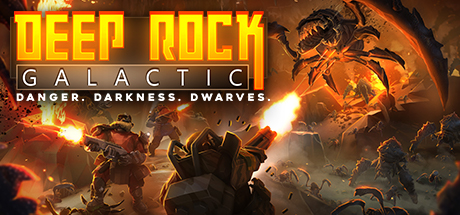ResourceCalculator.com is a website that can calculate required resources from a list of final requirements, and tell you how to get from the raw resources to the final resources.
If you want to add a new resource list to the calculator, you will only need 4 things:
- A folder in
resource_lists/for all the files to live in (eg: resource_lists/minecraft) - A 460px by 215px thumbnail of the game you are making a calculator for (eg: resource_lists/minecraft/icon.jpg)
- These are the same dimensions as the thumbnail in the Steam store.
- A set of rectangular images of uniform size for each of the resources (eg: resource_lists/minecraft/items/)
- The list of resources and what is needed to obtain them (eg: resource_lists/minecraft/resources.yaml)
The resource list is a yaml file that contains all the recipes for each item in the game. Here is a minimal example of what he yaml syntax looks like for a list of resources.
resources:
- name: Lithium
raw_resource: true
- name: Small Battery
recipes:
- output: 1
recipe_type: Backpack Printer
requirements:
Lithium: 1
- name: Medium Battery
recipes:
- output: 1
recipe_type: Printer
requirements:
Lithium: 2Other optional fields are also available.
# All "Resource" Fields
# String - the display name of the item
name: Lithium
# Specify the simplename of the resource, this is used for the image
# path the url encoding. It must be unique between resources.
custom_simplename: lithium1
# Indicates if the resource is a currency or not.
# currencies will be scaled uniquely from items as 1 currency is usually a lot
# less impactful than 1 item.
currency: false
# A note that will be attached to the recipe in a parseable manner. Comments
# should not be used in the resource list because it cannot always be properly
# parsed by automated tools.
note: "I am a note"
# A boolean that indicates if the resource should be considered a raw resource
# by default. If it is set to false or absent then users can still select it
# as a raw resource but it will not be set as one by default
raw_resource: true
# A list of all the recipes for this resource
recipes: []
# Overlay values for the global stack_multipliers chart. This lets certian
# resources have different stack sizes when doing the calculations of how many
# stacks of an item are needed. EG: in minecraft you can normally have 64 of an
# item, but some items can be stacked to only 16 instead. While others can only
# be a stack of 1.
custom_stack_multipliers:
Stack: 16Important
Comments should be avoided within the resource list. This is because comments
cannot be easily parsed programatically and will get easily stripped away
by automated tooling without warning. If notes need to be left on a piece of
data then the note element should be used.
For each item in your resources.yaml file you will need to have an image for that resource. If an image is missing, then the build process will submit a warning and fill that space with a purple color, indicating it does not have an icon.
The icons can be any size, even rectangular, but they all must be the same size as each other for a given calculator. The file names of each file should be the resource name in all lower case with no spaces or punctuation.
For Example:
"Pink Stained Glass Pane" becomes pinkstainedglasspane.png
"Jack 'o Lantern" becomes jackolantern.png
Note
If the names of two or more items would conflict, custom_simplename must
be used to define an alternate "simple" name for a given item. The item's image
must match the new custom_simplename, the display name does not need to be changed.
For Example:
name: Health Mix* uses healthmix.pngname: Health Mix+withcustom_simplename: healthmixplus* uses healthmixplus.png
The icon needs to be 460px by 215px to fit in with the other calculator
links. It also needs to be a jpg, not a png or other image file. If a game
is on Steam, the Steam page for a game uses a jpg thumbnail with those
dimensions. Simply downloading it to the appropriate directory and renaming it
to icon.jpg should be all that is needed.
Prefer images that only contain the title/tagline (first example) rather than ones for a specific event and/or with reviews (second example).
The first URL below will show the current header, while the second URL can be used to browse all historical thumbnails by changing the number.
https://cdn.akamai.steamstatic.com/steam/apps/{SteamAppID}/header.jpg
https://cdn.cloudflare.steamstatic.com/steam/apps/{SteamAppID}/header_alt_assets_1.jpg
SteamAppId can be located by opening the store page for any Steam game: https://store.steampowered.com/app/{SteamAppID}/Game_Name/
The primary method for building resource calculator is via a native linux
environment. On Linux, you will need to have installed Python 3.8 or newer,
nodejs 12 or newer, as well as all the python and node dependencies found in
requirements.txt and package.json. Additionally you will need the program
pngquant to perform the png compression stage of the build process.
sudo apt install python3 python3-pip pngquant npm
python3 -m venv venv
source venv/bin/activate
pip install -r requirements.txt
npm install
python3 build.py --watchThe secondary method for building resource calculator is using Docker and Docker
Compose. As long as you have Docker Compose on your system you should be able
to run the ./run.sh command from any terminal that can run a shell script.
This will start two docker containers, one which will build the calculator and
one which will host the calculator output so you can easily access it via a web
browser. It is recommended to use the ./run.sh --watch flag, this will tell
the build script to automatically re-build any changes you make without needing
to relaunch the build script.
The docker container will install the node and python libraries into the
node_modules and venv_docker volume folders.
Note
The ./run.sh command assumes that docker compose is run via docker-compose up
however newer versions of docker compose is run via the docker subcommand
docker compose up. If you are running into issues with this please open
a ticket.
On windows it is recommended to use the Docker runtime. However if you do not wish to use it you can install the dependencies manually using native versions, cygwin, or wsl just like on Linux.
Important
For Docker on Windows you may need to allow the docker container to access the repo files. This should be prompted to you the first time you run it but if it does not prompt then this can be done via Settings -> Resources -> File Sharing
Note
For Docker on Windows file events are not always shared with the docker
container, meaning that the --watch option will not always catch errors. To
workaround this you can attempt to install and run docker-windows-volume-watcher
however this does not seem to work with newer versions of docker desktop.
On macos it is recommended to use the docker runtime. If you do not wish to use it you can install the dependencies manually.
brew install python3 pngquant node
python3 -m venv venv
source venv/bin/activate
pip install -r requirements.txt
npm install
python3 build.py --watch

